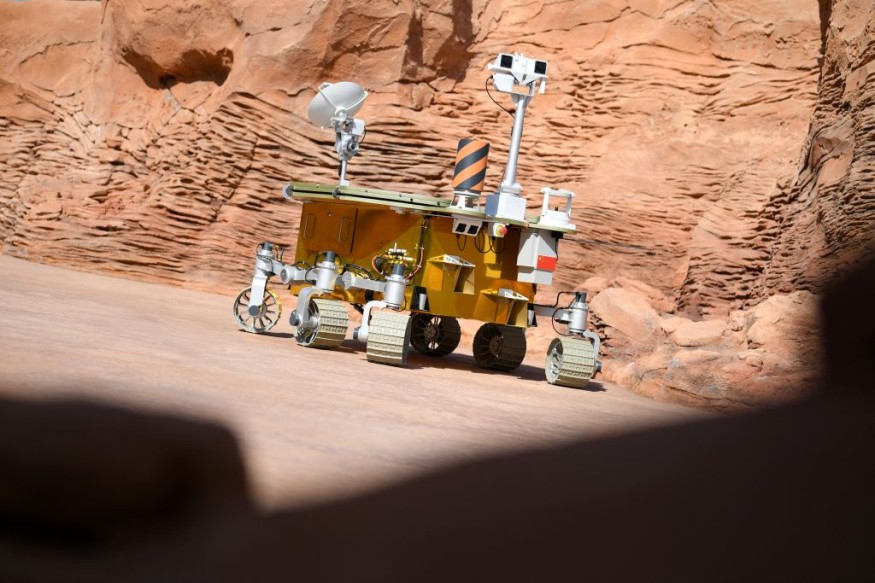
The Zhurong rover of Mars was able to detect polygon structures under the surface of the Red Planet. It appears that the structures are related to the long-lost water of the planet.
Zhurong Rover Finds Polygon Structures
This was documented in the "Buried palaeo-polygonal terrain detected underneath Utopia Planitia on Mars by the Zhurong radar" study. According to the research team from the Chinese Academy of Sciences (CAS), who were behind the study, they were able to find several odd polygons situated around 35 feet below the Martian surface. These polygons likely formed due to ice and were discovered through the ground-penetrating radar features of the rover.
With its high-tech radar, the Zhurong rover examined the Utopia Planitia, which is a massive plain in the northern hemisphere of Mars where the inactive husk of Zhurong still lies. It did so to examine what could be taking place beneath it.
The team from CAS discovered, based on the readings of Zhurong, 16 polygonal wedges in total in an area roughly three-fourths of a square mile. This suggests a vast distribution of such terrain beneath the Utopia Planitia.
While NASA was able to previously pick up similar polygons on Mars, this marks the first occasion where ground-penetrating radar (GPR) was used to gauge them. The researchers cannot conclusively determine the formation of the polygons, but they argue that they could have been formed through cycles of freezing and thawing.
Interestingly, the study also predicted that the polygons may have been formed during the Early Amazonian or Later Hesperian periods on Mars, which was around 2.9 to 3.7 billion years ago. This would mean that water bodies used to be present in the region where the polygons were discovered.
Earlier, the Zhurong rover topped headlines for its readings that showed greater credibility that the Red Planet used to bountifully host water bodies. Recent findings also show that this could have been as recent as just 400,000 years ago.
Another recent discovery of the Zhurong also posits that remarkable floods hit the Red Planet too. These same floods could have produced the layers beneath the surface of Utopia Planitia, where the polygon structures are.
China's Zhurong Rover
The Zhurong rover is China's first ever to land on a different planet. The rover is part of the Chinese National Space Administration's (CNSA) Tianwen-1 mission to Mars.
It was launched on July 23, 2020, and entered the orbit of Mars on February 10, 2021. The Zhurong was aboard a lander during this time. The lander soft-landed over the Red Planet on May 14, 2021, which made China the world's third country to successfully perform a spacecraft soft-landing on Mars. It also made China the second one to launch a Martian rover, only coming after the US. The Zhurong rover was successfully deployed on May 22, 2021.
Designed to last 93 Earth days, it stayed active for up to 356.5 days. It then entered planned hibernation on May 20, 2022, because of the Martian winter and sandstorms. However, the rover never woke up from this planned inactivity, despite being expected to wake up in December 2022.
RELATED ARTICLE : Is China's Zhurong Dead? CNSA Silent About Its Mars Rover's Fate Amid Tianwen 1 Mission's 2nd Anniversary
Check out more news and information on Space in Science Times.
© 2025 ScienceTimes.com All rights reserved. Do not reproduce without permission. The window to the world of Science Times.










